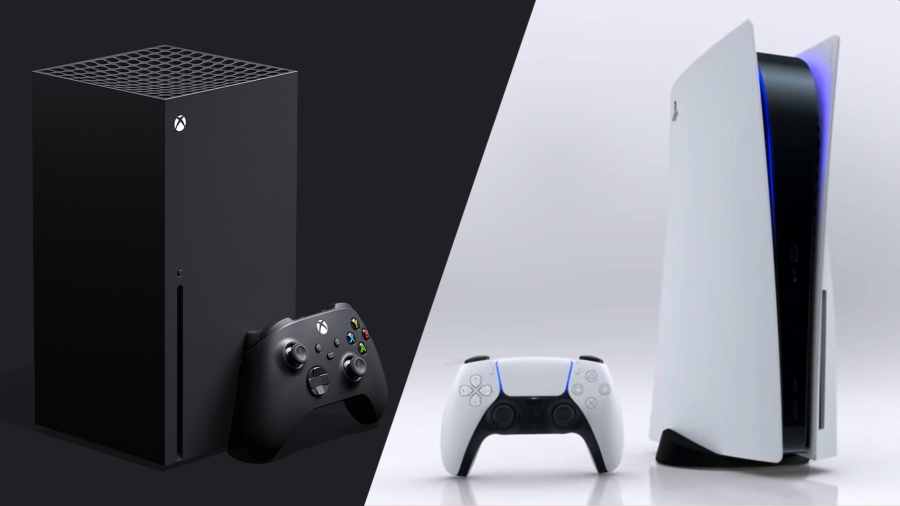What Technological Changes Does The PlayStation 5 & Xbox Series X Bring?

2020 certainly looks to be a massive year when it comes to console gaming with the ninth generation of consoles dropping in the middle of November. The new offerings from Microsoft and Sony are set to bring around a marked improvement in performance by being bundled with much beefier components than their predecessors which should lead to much better graphical performance.
What’s Changed Since The Last Generation Of Consoles?
It’s been seven years since the launch of both the Xbox One and the PlayStation 4 which brought with them an incredible upheaval of graphical performance and hardware compared to even their predecessors, the Xbox 360 and PlayStation 3. Since then, it’s important to stress that there have been notable changes in the way that games are experienced on both the current generation and the next generation of consoles. There has been a shift towards subscription-based models such as Xbox Game Pass as well as streaming services such as Google’s Stadia.
This technology tide extends certainly to the on-demand media industry with regards to the rise of both Netflix and Prime Video amongst others. The wealth of providers has certainly leaned itself to the rise of comparison websites as consumers ponder which service is best and right for them.
In essence, the seismic shift online for media consumption means that people are wanting services now as opposed to waiting. The ease of access when it comes to entertainment has seen certain industries flourish to an extent that curation is needed to give consumers the best possible deals. For example, this list for the best online casinos by VegasSlotsOnline portrays this perfectly, offering a selection of the best casinos out there to give players the best experience possible. They achieve this through what they call a “strict vetting process” that only allows the best to be recommended. Besides, with the fact they’ve tested over 1200 casinos, the marketplace remains competitive when it comes to the online casino experience.
With the adaptability of software with the likes of HTML5, online casinos are just one of many who have become more prominent in the entertainment sector and it does not require top-tier graphics to pull in customers. With market conditions being so different and competitive now, only time will tell if there is still such a demand for cutting-edge hardware considering how in-demand on-demand is.
Looking back at the hardware in the eighth generation, they brought with it eight-core CPUs and a much greater quantity of RAM meaning that the power of games and graphics they could handle was much greater than even their predecessors. Moreover, the addition of 4K support in the cases of the beefier variants of the last generation – the Xbox One X and PlayStation 4 Pro – means that the selection of games available ended up looking a lot better. You will see notable improvements in the next generation to allow for greater graphical fidelity.

Source: Pixabay
So, What’s New?
When it comes to the marquee point with graphical performance, both the PlayStation 5 and Xbox Series X are set to have support for ray-tracing, the next big thing for console gaming. Briefly, ray-tracing allows for much more realistic lighting through its ability to track the way light travels in an environment. Most importantly it tracks the way it bounces off different surfaces, which fundamentally means it traces light rays, hence ray-tracing.
Before the announcement that both new consoles will support ray tracing, it was previously only available to those with high-end gaming PCs and Nvidia’s RTX 2000 series of graphics cards to experience it, you needed anything from 2060 upwards to the insanely expensive 2080 Ti. Now, however, the experience of better lighting and shadows can be yours for just the price of an entry-level gaming PC. It’s hoped that the release of home consoles with such high-performance features widens the overall access and that we could see ray-tracing as a feature on mid-spec graphics cards over the next few years. With the upgrade to Microsoft’s Direct X 12 Ultimate, it’s added support for ray-tracing and variable-rate shading, making it perfect for the new console lineup.
The release of these new consoles also marks the first time that ray-tracing is possible on any form of AMD hardware as it had previously been exclusive to Nvidia’s RTX lineup of GPUs.

Source: Pixabay
In terms of hardware, more generally speaking, both the Xbox Series X and PlayStation 5 have noticeable upgrades compared to their predecessors, in no small part thanks to the incredible rate of pace of innovation.
Both consoles bring with them a raft of upgrades including 16GB of ultra-speedy DDR6 memory and possible support for 8K displays, although this display technology is still in its infancy. For example, Samsung’s flagship 8K QLED HDR televisions are currently not very accessible or affordable to the mainstream consumer. Still, with time, prices should start to come down as access is widened, as it did in the case of both Full HD and 4K panels. Sony and Microsoft have also been working hard to make sure they have enticing offerings for the next generation, as the Japanese giant has invested heavily in Epic Games while the American company acquired ZeniMax Media which owns a number of well-known developers including Bethesda Softworks.
The new generation of consoles certainly look to bring some incredible features with them and with the marked improvement in graphical capabilities, 2020 might just be one of the best years for console gaming yet.

